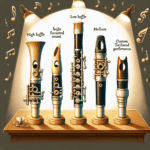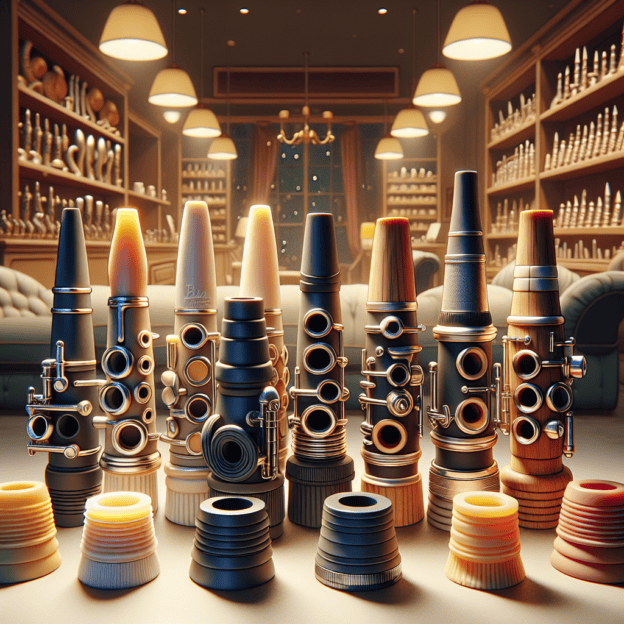The clarinet mouthpiece plays a key role in shaping your tone, control, and overall musical expression. With a wide array of options available, finding the perfect match for your playing style can be challenging. This guide will walk you through the various types of mouthpieces and help you understand how they affect your sound and playability.
Understanding Mouthpieces: The Basics
The mouthpiece acts as the bridge between your breath and the clarinet's sound. It's where your lips connect with the instrument, significantly influencing the timbre and responsiveness. Mouthpieces vary in tip openings, baffle designs, and internal shapes, each contributing to the overall sound quality.
Types of Clarinet Mouthpieces
- Hard Rubber Mouthpieces: Professionals often prefer these for their durability and tonal clarity. They produce a warm, round sound, making them suitable for both jazz and classical music.
- Plastic Mouthpieces: Ideal for students and beginners, these affordable and durable options provide a good starting point. However, they might not offer the same rich sound as other materials.
- Metal Mouthpieces: These less common options deliver a bright, projecting sound. Advanced players often use them for specific sound qualities, though some may find them less comfortable.
- Wood Mouthpieces: These rare mouthpieces offer unique sounds with rich overtones. They require extra care and are often considered specialty items.
| Mouthpiece Material | Sound Characteristics | Best Suited For |
|---|---|---|
| Hard Rubber | Warm, round tone | Professionals, Jazz & Classical |
| Plastic | Decent quality, less rich | Beginners, Students |
| Metal | Bright, projecting sound | Advanced players, Specific styles |
| Wood | Unique, rich overtones | Specialty use, Experienced players |
Tip Opening and Playing Style
The tip opening, which is the distance between the mouthpiece tip and the reed, greatly influences playability and sound:
- Narrow Tip Openings (1.0 to 1.5mm): These allow for crisp, controlled playing, perfect for classical musicians seeking precise articulation.
- Medium Tip Openings (1.5 to 2.5mm): The most common choice, offering a balance between ease of play and warm tone. They're versatile for various music genres.
- Wide Tip Openings (2.5mm and above): These allow more air flow, resulting in a powerful, full-bodied sound. Jazz musicians often prefer this for its robust tone.
Baffle Design
The mouthpiece's internal design, especially the baffle, significantly affects airflow direction and character:
- Low Baffle: Produces a richer, warmer sound, ideal for classical performances.
- Medium Baffle: Offers balanced sound with good projection, suitable for both jazz and classical styles.
- High Baffle: Enhances bright projection and quick response, often preferred by jazz musicians for its ability to stand out in a mix.
Comparing Mouthpiece Brands
Several brands offer high-quality clarinet mouthpieces, each with unique characteristics:
- Vandoren: Known for precision, these mouthpieces are popular among professionals for their consistency and tonal quality.
- Rico: Affordable options that offer decent quality, making them popular among beginners.
- Yamaha: Produces versatile mouthpieces suitable for various playing styles.
- Selmer: A favorite among classical musicians, offering rich, centered tones.
- Martin Freres: Celebrated for craftsmanship, these mouthpieces offer unique tonal quality and comfort, suitable for both amateurs and professionals.
Choosing the Right Mouthpiece
Your mouthpiece choice can significantly impact your playing style and overall satisfaction. Consider these factors:
- Playing Style: Different mouthpieces suit different genres, from classical to jazz.
- Experience Level: Beginners might benefit from mouthpieces that are easier to play and more comfortable.
- Sound Preference: Try various mouthpieces to find the sound you like best. Always test before purchasing if possible.
Testing and Experimentation
Finding your ideal mouthpiece takes time and experimentation. Local music shops or community programs often allow you to try different mouthpieces. Give each one ample time to evaluate how it feels and sounds during practice.
Understanding the various mouthpiece types, materials, and specifications like tip opening and baffle design can significantly improve your clarinet performance. By considering your personal comfort and sound preferences, you'll be well-equipped to choose a mouthpiece that complements your playing style. The right mouthpiece can dramatically enhance your musical expression, whether you're playing solo or in an ensemble.







